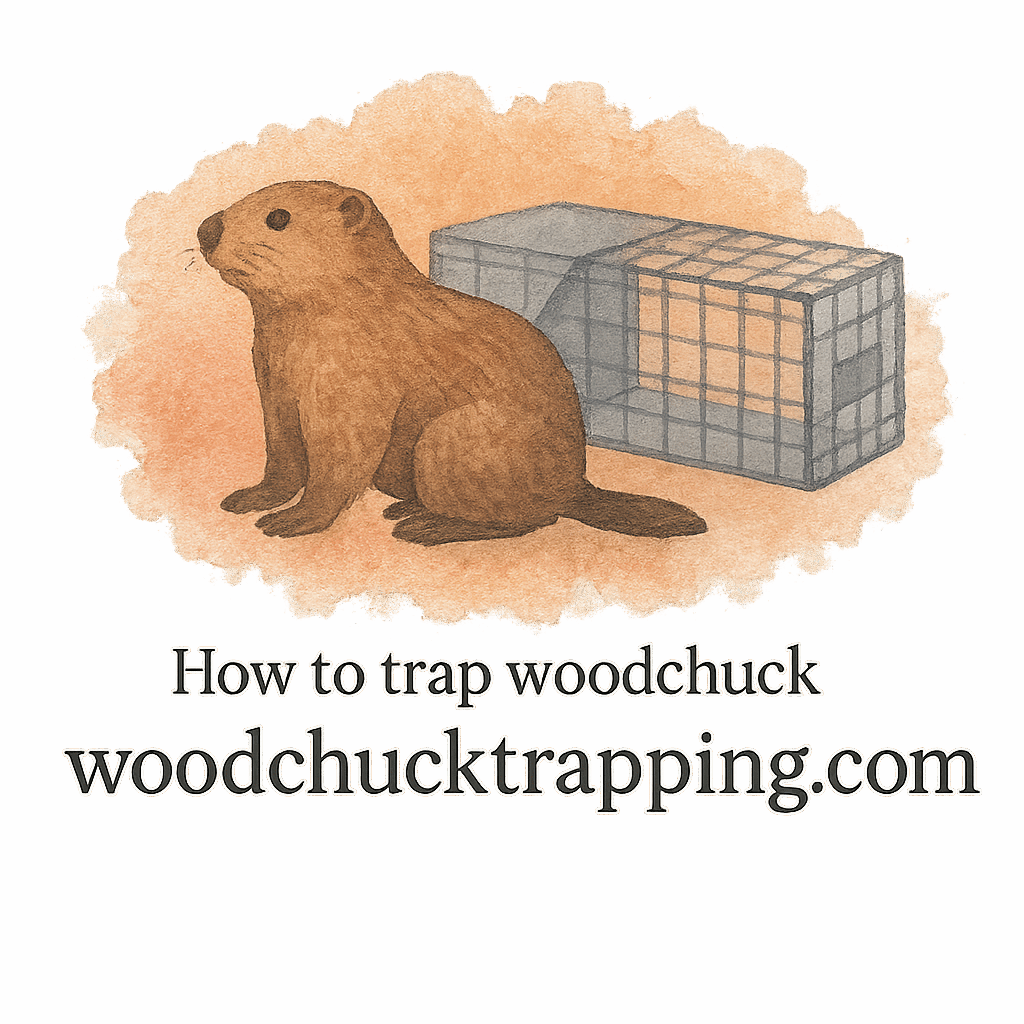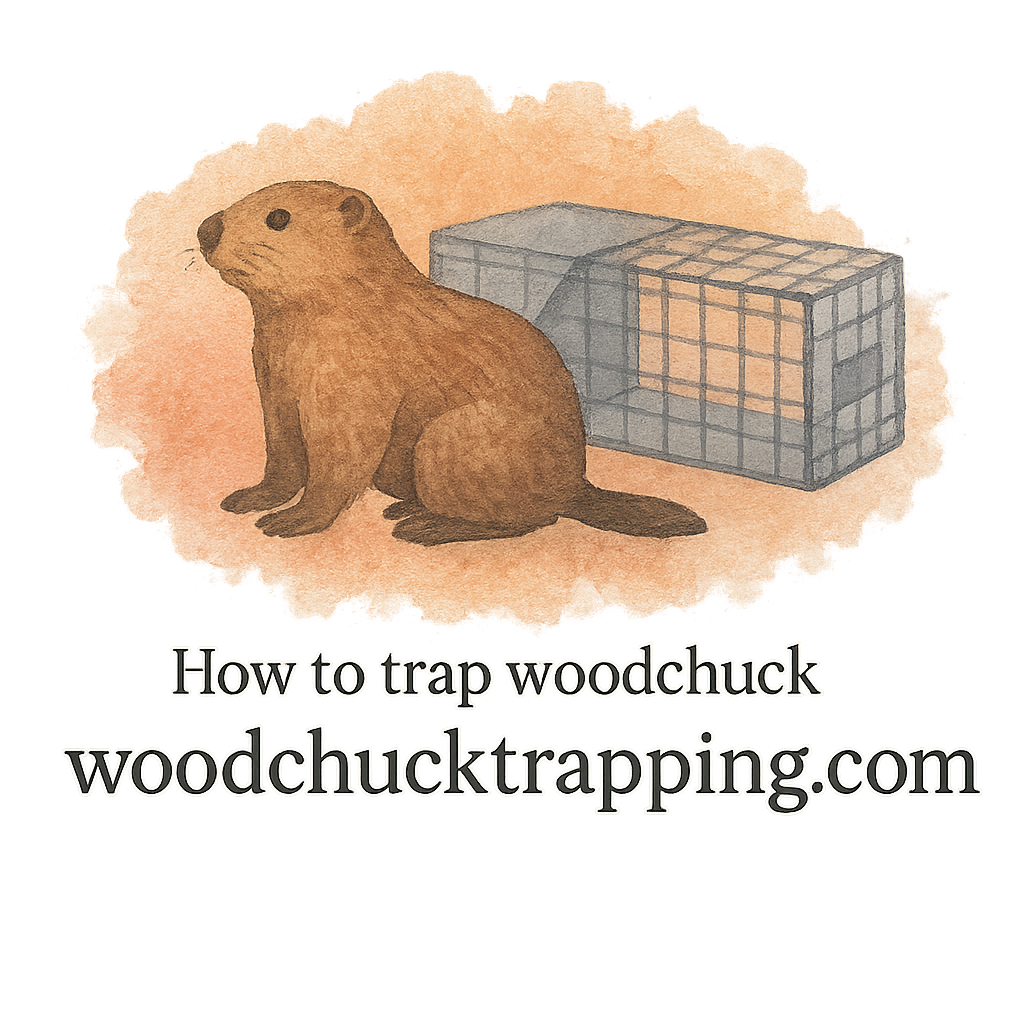Introduction
If you’ve ever walked into your garden and found your vegetables nibbled to the stems or burrows popping up around your yard, chances are a woodchuck is the culprit. Gardeners across the country face this challenge, but there’s one solution many are turning to: humane woodchuck trapping techniques. Instead of harsh or dangerous methods, humane trapping offers balance—protecting your garden while respecting wildlife.
In this guide, we’ll break down six powerful reasons why more gardeners are choosing humane techniques over traditional ones. By the end, you’ll see how humane woodchuck trapping can protect your garden, keep you within the law, and give you peace of mind.
What Makes Humane Trapping Different?
Defining Humane Woodchuck Trapping
Humane trapping is all about capturing a woodchuck without causing it unnecessary pain, fear, or injury. Instead of deadly traps or harmful poisons, gardeners use live-capture traps designed to safely contain the animal until it can be relocated.
Traditional vs. Humane Approaches
Traditional methods often include lethal traps or toxic substances. While effective, these come with risks: accidental harm to pets, soil contamination, or unnecessary suffering. Humane trapping, on the other hand, focuses on safe handling and relocation, ensuring balance between pest control and ethical responsibility.
Reason 1: Protecting Garden Integrity Without Excessive Harm
Minimizing Damage While Controlling Pests
Woodchucks can destroy entire patches of vegetables overnight. Using humane traps helps stop the destruction without creating collateral damage. By targeting only the nuisance animal, you avoid harming non-target wildlife or your neighbor’s curious pet.
Signs of Woodchuck Infestation
Before setting a trap, it’s essential to confirm you’re dealing with woodchucks. Look for telltale signs like chewed plants, wide burrow entrances, and dirt mounds. Identifying these infestation signs helps ensure you’re solving the right problem.
Reason 2: Humane Trapping Respects Wildlife
Why Respect Matters in Pest Control
Even if woodchucks feel like pests, they’re still part of the ecosystem. Humane trapping methods acknowledge their role in nature while addressing the immediate problem. Respecting wildlife creates a healthier balance for your garden and the environment.
Handling Trapped Animals Safely
Once a woodchuck is trapped, safe handling is crucial. Using gloves and the right tools ensures you can transport the animal securely without risking bites or scratches.

Reason 3: Humane Techniques Improve Success Rates
Smart Use of Baiting and Luring
The right bait can make or break your trapping efforts. Gardeners often use fresh vegetables or fruits to attract woodchucks. With proper lure placement, you can significantly increase your success rate while keeping the process safe.
Trap Scent and Lure Selection
Woodchucks are cautious creatures. Using effective scent bait helps mask human odors, making traps more inviting. Choosing the right trap scent boosts your chances of a quick, humane capture.
Reason 4: Compliance with Local Laws and Safety Regulations
Trapping Laws and Safety Guidelines
Many regions have strict rules on animal control. Humane trapping aligns with these laws, helping gardeners avoid fines or legal trouble. Staying informed about safety and regulations ensures your methods are both legal and ethical.
The Role of Gloves and Safety Gear
Protective gear like gloves and masks prevents disease transmission and ensures safe transport. These essentials are just as important as the trap itself.
Reason 5: Humane Methods Reduce Stress on Animals
Humane Trap Designs
Specialized humane traps are built to minimize injury and stress. Unlike older models, they provide ventilation, smooth interiors, and secure locking mechanisms to keep the animal calm.
Compact Traps for Small Yards
For gardeners working with minimal space or small yards, compact humane traps are ideal. They’re easy to set up, lightweight, and effective without overwhelming your garden setup.
Reason 6: Long-Term Prevention and Garden Protection
Preventing Yard Damage
Catching a woodchuck is only part of the solution. Humane techniques also emphasize prevention. Sealing burrows, using fencing, and reinforcing weak spots helps protect your yard from repeat invasions.
Burrow Management
Woodchucks dig extensive burrows. Once the animal is relocated, filling and managing these burrows prevents future damage and keeps your lawn safe.
Essential Tools for Humane Woodchuck Trapping
Trap Gear and Equipment Reviews
Not all traps are created equal. Checking reliable equipment reviews ensures you invest in safe, effective gear that matches your needs.
Trapping Techniques and Essentials
Mastering how to trap a woodchuck involves learning proven techniques. From proper placement to timing, knowing these essentials makes the difference between success and frustration.
Common Mistakes Gardeners Make When Trapping
Overlooking Signs of Infestation
Some gardeners set traps without confirming woodchuck activity. Misidentifying the culprit wastes time and effort. Always check for accurate signs before starting.
Using the Wrong Tools or Trap Gear
Cheap or poorly designed traps can harm the animal or fail to capture it. Investing in quality trap gear ensures safe, effective results.
Expert Tips for Success
Choosing the Right Techniques
Each yard is unique. Experimenting with different humane trapping techniques helps you find the best fit for your situation.
Maximizing Efficiency in Minimal Space
Even in small spaces, humane trapping can be effective. Compact traps and smart placement strategies make it possible to manage woodchucks in tight garden layouts.
Conclusion
Gardeners prefer humane woodchuck trapping techniques because they balance protection, ethics, and effectiveness. These methods safeguard your garden, respect wildlife, and comply with the law—all while delivering real results. Whether you’re dealing with burrows in your yard or a vegetable thief in your garden, humane methods are the smart choice.
FAQs
1. Why should I choose humane woodchuck trapping over poisons?
Poisons can harm pets, children, and other wildlife. Humane trapping avoids those risks while still solving the problem.
2. What’s the best bait for humane woodchuck traps?
Fresh vegetables like carrots, lettuce, or apples work best. You can learn more about baiting and luring here.
3. Are humane traps reusable?
Yes, with proper care and cleaning, quality humane traps can last for years.
4. How do I know if I have a woodchuck problem?
Check for wide burrow entrances, dirt mounds, and chewed garden plants—classic signs of infestation.
5. Can humane traps be used in a small yard?
Absolutely! There are compact traps designed specifically for smaller spaces.
6. Is it legal to relocate trapped woodchucks?
This depends on your state’s laws and safety guidelines. Always check regulations before relocating.
7. What’s the most common mistake gardeners make?
Using the wrong trap gear or ignoring proper trapping techniques. Investing in the right tools ensures success.


